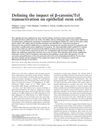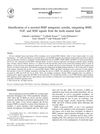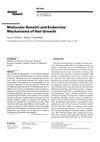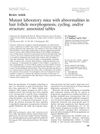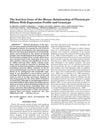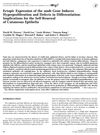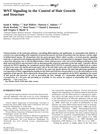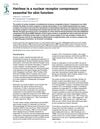Hairless: A Nuclear Receptor Corepressor Essential for Skin Function
January 2006
in “
Advances in developmental biology
”
Hairless gene HR protein nuclear receptor corepressor thyroid hormone receptor vitamin D receptor retinoic acid receptor hair regrowth hair cycling histone deacetylases chromatin modification congenital hair loss disorders catagen phase hair follicle disintegration dermal cysts epithelial stem cell differentiation alopecia universalis atrichia with papular lesions K14 promoter epidermal differentiation Wise gene Wnt signaling Wnt inhibitors hair follicle regeneration hair follicle morphogenesis HR thyroid hormone vitamin D retinoic acid hair loss hair growth chromatin stem cell differentiation alopecia atrichia Wnt
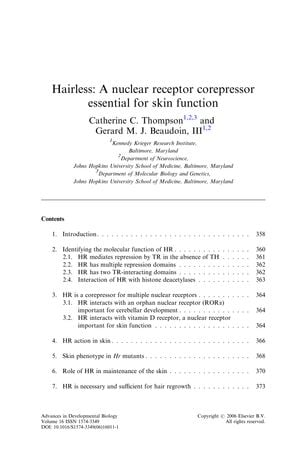
TLDR The Hairless gene is crucial for healthy skin and hair growth.
The document from 2006 explores the Hairless (HR) gene and its protein, which are critical for skin function and hair cycling. HR acts as a nuclear receptor corepressor, interacting with receptors like thyroid hormone, vitamin D, and retinoic acid receptors, which are important for skin and cerebellar development. HR is necessary for hair regrowth, as evidenced by studies on Hr mutant mice that suffer hair loss after initial follicle development. These mice have provided insights into HR's role in hair cycling and skin homeostasis. HR's interaction with histone deacetylases suggests it modifies chromatin to regulate gene expression. HR is distinct in its specialized role in skin compared to other corepressors with broader tissue roles. Mutations in HR are linked to congenital hair loss disorders, emphasizing its importance in vivo. HR regulates the hair cycle, particularly during the catagen phase, and is necessary for normal hair cycling. The absence of HR leads to hair follicle disintegration and dermal cysts. HR's role in skin maintenance involves regulating epithelial stem cell differentiation, and disruptions can lead to changes in cell fate. The human orthologue of Hr is mutated in alopecia universalis and atrichia with papular lesions, indicating its conserved function. Experiments with transgenic mice expressing HR under the K14 promoter showed that HR is sufficient for hair regrowth. The loss of HR upregulates genes involved in epidermal differentiation and affects the expression of Wise, a gene that modulates Wnt signaling. HR may regulate hair follicle regeneration by repressing Wnt inhibitors, allowing Wnt activation, which is necessary for hair growth initiation. This provides a molecular mechanism for the failure of hair follicles to regenerate in HR mutant skin. The findings suggest HR's broader role in regulating epithelial stem cell differentiation and other signaling pathways in hair follicle morphogenesis and cycling.


